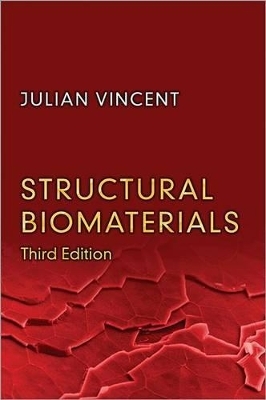
Structural Biomaterials
Princeton University Press (Verlag)
978-0-691-15400-8 (ISBN)
This is a thoroughly revised, updated, and expanded edition of a classic illustrated introduction to the structural materials in natural organisms and what we can learn from them to improve man-made technology--from nanotechnology to textiles to architecture. Julian Vincent's book has long been recognized as a standard work on the engineering design of biomaterials and is used by undergraduates, graduates, researchers, and professionals studying biology, zoology, engineering, and biologically inspired design. This third edition incorporates new developments in the field, the most important of which have been at the molecular level. All of the illustrations have been redrawn, the references have been updated, and a new chapter on biomimetic design has been added. Vincent emphasizes the mechanical properties of structural biomaterials, their contribution to the lives of organisms, and how these materials differ from man-made ones. He shows how the properties of biomaterials are derived from their chemistry and interactions, and how to measure them.
Starting with proteins and polysaccharides, he shows how skin and hair function, how materials self-assemble, and how ceramics such as bone and mother-of-pearl can be so stiff and tough, despite being made in water in benign ambient conditions. Finally, he combines these topics with an analysis of how the design of biomaterials can be adapted in technology, and presents a series of guidelines for designers. * An accessible illustrated introduction with minimal technical jargon * Suitable for undergraduates and more advanced readers * Integrates chemistry, mechanics, and biology * Includes descriptions of all biological materials * Simple exposition of mechanical analysis of materials
Julian Vincent, a biologist with a long-standing interest in engineering, is Honorary Professor of Biomimetics in the Department of Mechanical Engineering at Bath University and Special Professor in the Faculty of the Built Environment at Nottingham University.
Preface vii CHAPTER ONE: Basic Elasticity and Viscoelasticity 1 1.1 Hookean Materials and Short-Range Forces 1 1.2 Non-Hookean Materials and High Strains 4 1.3 The Energy Approach 6 1.4 Yield and Fracture 21 1.5 Adhesion 28 CHAPTER TWO: Proteins 29 2.1 Amino Acids and Their Polymerization--Primary Structure 29 2.2 Conformation--Secondary Structure 33 2.3 Structural Proteins 35 2.4 Coping with Strain Energy 57 CHAPTER THREE: Sugars and Fillers 61 3.1 Fibers 65 3.2 Structural Polysaccharides in Plants 68 3.3 Water, the Invisible Support 72 3.4 Mucus 82 CHAPTER FOUR: Soggy Skeletons and Shock Absorbers 84 4.1 Composite Materials 84 4.2 Stress--Strain Behavior 88 4.3 Poisson's Ratio and Auxeticism 89 4.4 The Skeleton of the S ea Anemone 95 4.5 Stretching the Pregnant L ocust 99 4.6 Fracture--Chance and Choice 101 4.7 Stiffness--A Biological Variable 108 CHAPTER FIVE: Stiff Materials from Polymers 116 5.1 Crystals and O rder 116 5.2 Composite Materials 118 5.3 To Stiffen the Matrix 129 5.4 Hardness and Indentation 133 5.5 Cellular Materials 135 CHAPTER SIX: Biological Ceramics 143 6.1 Calcium Salts or Silica? 144 6.2 Problems with Mechanical Tests 147 6.3 Mollusc Shells 151 6.4 The Functional Design of Bone 159 6.5 Teeth 169 6.6 Eggshell 171 6.7 Echinoderms 175 CHAPTER SEVEN: Implementing Ideas Gleaned from Biology 178 7.1 Biomimetic Products 179 7.2 Quasi-Biomimetic Products 185 7.3 Techniques for Biomimetics 187 7.4 Instead of nergy ... 193 7.5 Use Space 195 7.6 . . or Use Information ...197 7.7 ... and Structure ... 199 7.8 Well, That's It 204 References 205 Index 223
| Zusatzinfo | 206 line illus. 15 tables. |
|---|---|
| Verlagsort | New Jersey |
| Sprache | englisch |
| Maße | 152 x 235 mm |
| Gewicht | 340 g |
| Themenwelt | Studium ► 1. Studienabschnitt (Vorklinik) ► Physiologie |
| Naturwissenschaften ► Biologie | |
| Naturwissenschaften ► Chemie | |
| Technik ► Umwelttechnik / Biotechnologie | |
| ISBN-10 | 0-691-15400-7 / 0691154007 |
| ISBN-13 | 978-0-691-15400-8 / 9780691154008 |
| Zustand | Neuware |
| Haben Sie eine Frage zum Produkt? |
aus dem Bereich


